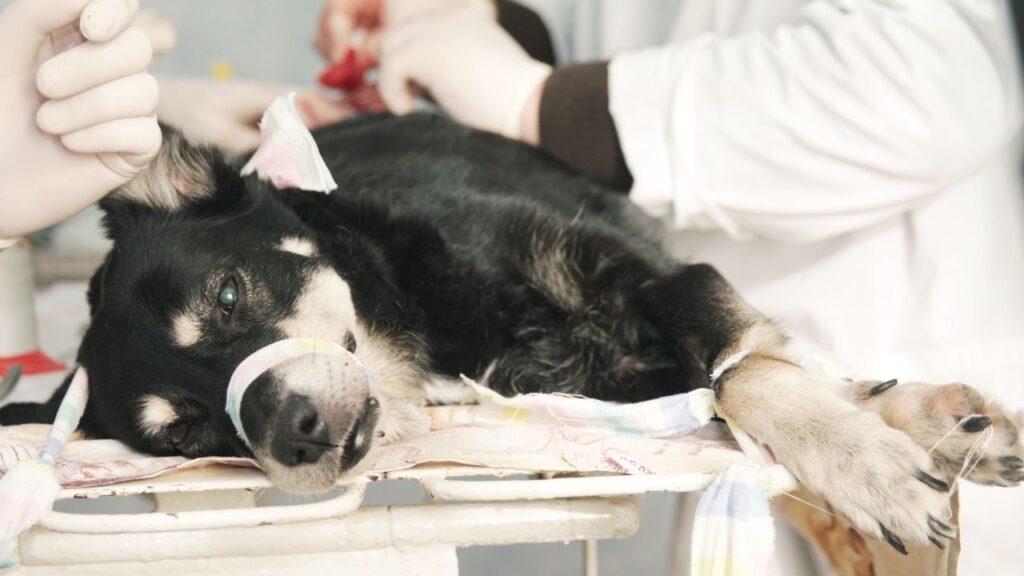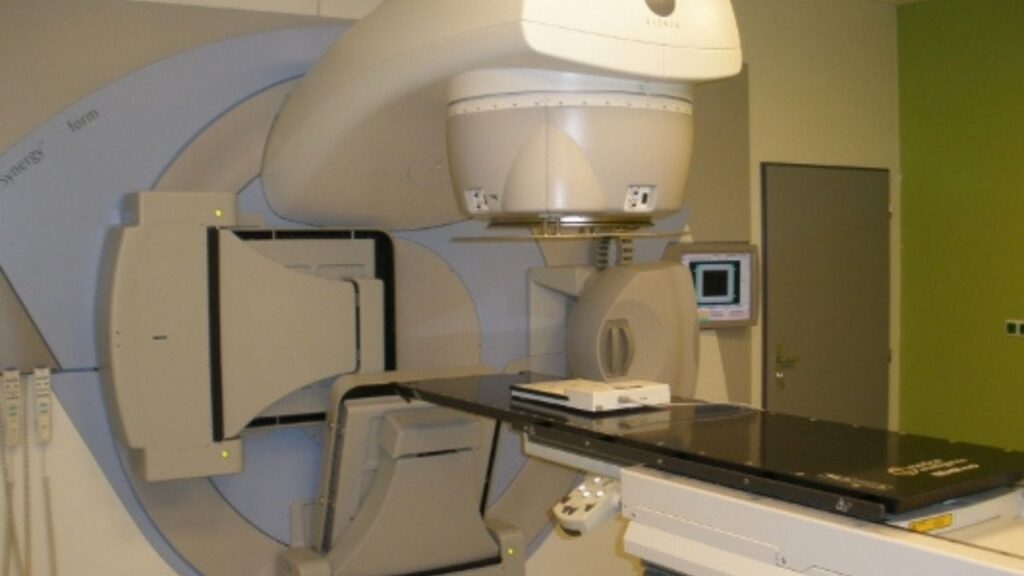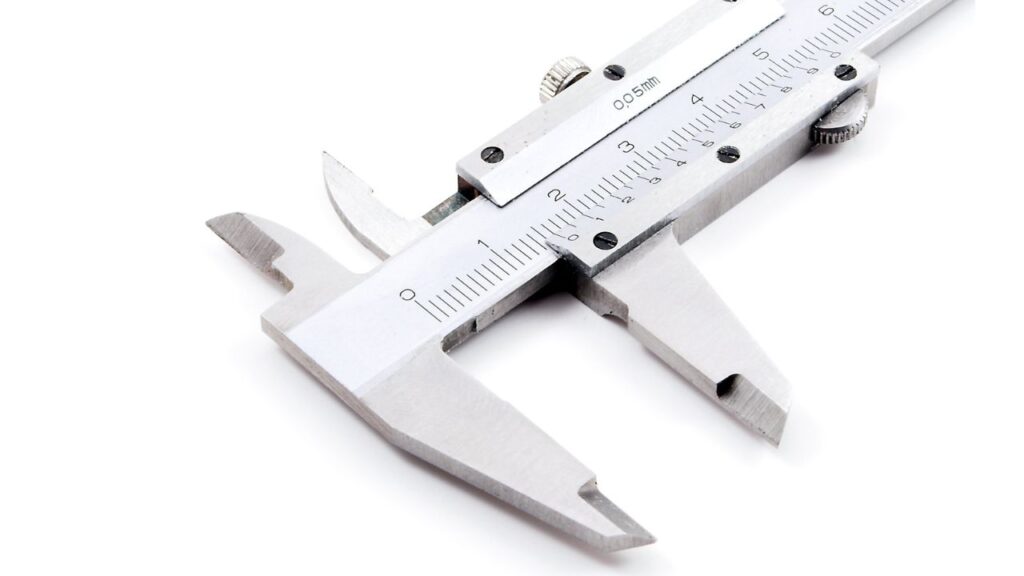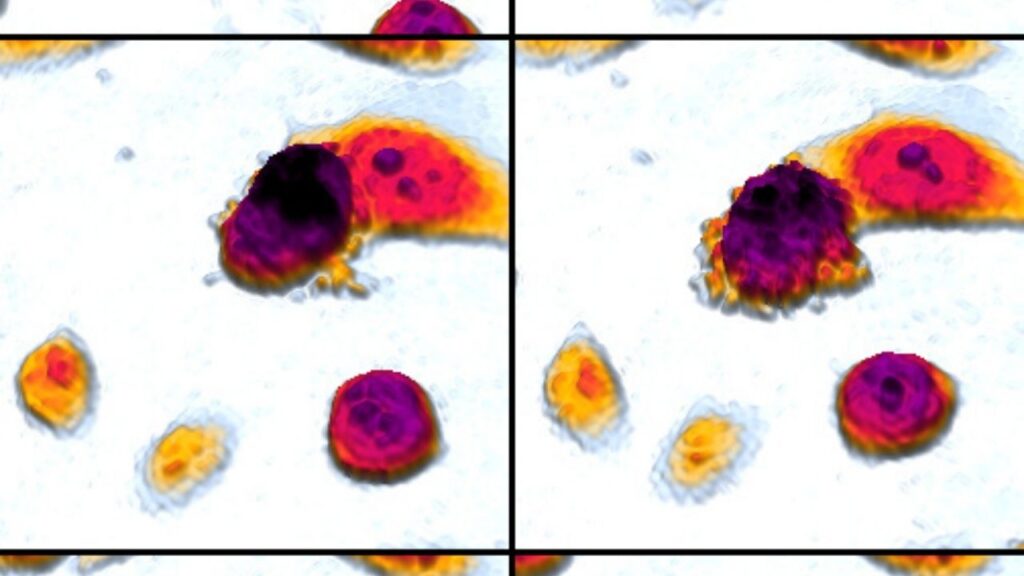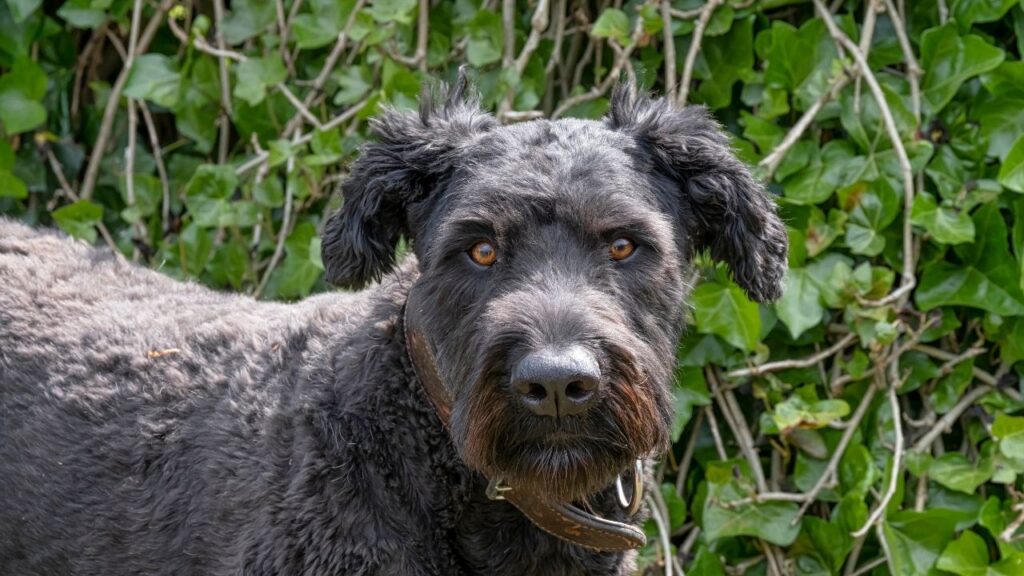Peripheral nerve sheath tumors grow from the cells that surround the peripheral nerves in your dog’s body. Peripheral nerve sheath tumors (PNSTs) can be managed with surgery, stereotactic radiotherapy, and pain medication, but commonly reoccur. Early diagnosis and treatment can lead to more positive outcomes, such as improved mobility and good quality of life.
Key Takeaways
- Peripheral nerve sheath tumors in dogs are uncommon, but can be very serious, depending on the type and location of the tumor. Most peripheral nerve sheath tumors in dogs are malignant and will grow and push into nearby tissue.
- The lifespan of a dog with a peripheral nerve sheath tumor varies, depending on type of tumor and where it is. Survival times range from 4 to 27 months, with an average of 1 year after the tumor is diagnosed.
- Some peripheral nerve sheath tumors in dogs can be painful. Tumors that push on nerves, the spinal cord, or other sensitive areas can become more painful as they grow.
- If possible, a peripheral nerve sheath tumor is treated by surgical removal. Radiation is also an option in many cases.
Nerve Sheath Tumors
Peripheral nerve sheath tumors in dogs are diagnosed less frequently than other nervous system tumors. Therefore, we have less information on the canine peripheral nerve sheath tumor response to treatment, survival times, and quality of life.
Let’s get oriented to nerve sheath tumors in dogs with some basic terms:
- Your dog’s nervous system is made up of two parts: the central nervous system and the peripheral nervous system.
- The central nervous system is in the center of the body: the brain and spinal cord.
- The peripheral nervous system is on the periphery, or outer parts, of the body. The nerves leading away from the central nervous system – basically any neuron (nerve cell) that is not in the brain or spinal cord — are the peripheral nervous system.
Nerve sheath tumors arise in the cells that surround and support the nerves in the peripheral nervous system. Several types of cells surround and support peripheral nerves. These include:2
- Schwann cell
- Perineural cell
- Epineural fibroblast
- Endoneural fibroblasts
A peripheral nerve sheath tumor (often abbreviated to PNST on medical charts) is a tumor that grows from one of these nerve support cells.
Where Nerve Sheath Tumors Occur
These nerve sheath tumors can affect any nerve in the body but most commonly affect:2,3
- spinal nerve roots
- cranial nerves (in the head)
- the brainstem
- nerves of the legs
- nerves in the abdomen (infrequently)
How Peripheral Nerve Sheath Tumors Are Classified
Histopathologists – the veterinary specialists who look at tumors in the lab – may need to update the grading system for peripheral nerve sheath tumors.3
Current tumor classifications include:2
- Malignant peripheral nerve sheath tumors (most common and most aggressive)
- Schwannoma (benign)
- Perineuroma (benign)
- Neurofibroma (benign)
What Happens Next?
Left untreated, peripheral nerve sheath tumors will continue to grow and extend into surrounding tissues, most commonly the spine or the brainstem.2
Depending upon what nerve is affected, the symptoms can vary.
Reported survival times – starting from diagnosis – range from 4 to 27 months (about two and a half years). The median survival time for nerve sheath tumors in dogs is 12 months.5

Nerve sheath tumors in dogs tend to occur in older dogs. Early detection and treatment leads to better outcomes.
Stats and Facts About Nerve Sheath Tumors in Dogs
- Peripheral nerve sheath tumors make up 27% of nervous system tumors in dogs.1
- Most peripheral nerve sheath tumors are malignant.1
- Peripheral nerve sheath tumors are classified as sarcomas (tumors that arise from connective tissue).
- Peripheral nerve sheath tumors are not common in dogs.4
Causes
There is no known specific cause for canine peripheral nerve sheath tumors. Like all cancers, this is a multifactorial disease, which means that many things have to go wrong for it to occur.
Risk Factors
There are no known specific risk factors for peripheral nerve sheath tumors in dogs.
In humans, exposure to radiation therapy and genetics may increase the risk of peripheral nerve sheath tumors, but we do not know if this is the same in dogs.6
Nerve Sheath Tumor in Dogs Symptoms
Dogs with peripheral nerve sheath tumors can show various symptoms, depending on the affected nerve. Common symptoms include:8
- Lameness (limping) or difficulty walking
- Atrophy (shrinkage) of the muscles that are supplied by the affected nerve
- Altered sensation (numbness or tingling), which can lead to excessive licking of the area
- Spinal discomfort
- Pain and swelling where the nerve is enlarged
Diagnosing a Nerve Sheath Tumor
Your veterinarian will thoroughly examine your dog, paying special attention to the neurologic and orthopedic systems.
He or she will likely recommend lab tests (bloodwork and possibly urinalysis) and thoracic radiographs (chest x-rays) to evaluate your dog’s overall health.
If possible, your veterinary team may try to get a fine needle aspirate (FNA) or biopsy of the mass.
Malignant peripheral nerve sheath tumors rarely spread to the lungs but are often locally aggressive (grow quickly and invade nearby tissue). Your dog’s veterinary team may recommend advanced imaging with MRI to get more information on where and what kind it is. MRI images are also helpful in surgical and radiation treatment planning.
Prognosis and Staging
Staging helps you and your dog’s veterinary team know how much cancer is in your dog’s body and where it may have spread. Staging includes diagnostics such as:
- Blood work
- Thoracic radiographs (chest x-rays)
- Abdominal Ultrasound
- MRI or CT
Staging cancer and identifying your dog’s other medical issues provides a more accurate idea of how your dog might respond to treatment. It might also help your veterinary team decide which treatment options are likely to work best.
The more quickly peripheral nerve sheath tumors are identified and surgically removed, the better the results.
- One study reported a mean survival time of 180 days after surgery.1
- Another study reported mean survival time in the 4-27 months range.5
The location of your dog’s tumor may significantly influence survival time. More peripheral (located further out on the body) tumors – like those along the legs – may be easier to remove surgically.
Treatment for Nerve Sheath Tumors
As with most cancer treatments, the focus is on improving symptoms, maintaining a good quality of life, extending your dog’s life beyond what it would have been if left untreated, and, whenever possible, putting cancer in remission.
Surgery
In some cases, surgical removal of nerve sheath tumors can be curative (complete removal so that it does not return).
In other cases, surgical removal may help debulk the tumor (make it smaller) so other treatments can be started. 4,5
Chemotherapy
There is one case report of injectable chemotherapy being used in a dog with a malignant peripheral nerve sheath tumor,7 but chemotherapy drugs are not commonly used.
Radiation
Radiation therapy has been used to treat peripheral nerve sheath tumors.5
Radiation may be especially useful if the tumor is in an area that makes surgical removal difficult or impossible or if the surgeon cannot get clean margins.
Immunotherapy
Current research in human medicine is looking at immunotherapy for peripheral nerve sheath tumors,9 but there are currently no options available for dogs.
Vaccine
There is no vaccine to prevent or treat peripheral nerve sheath tumors in dogs.
Diet
There is no diet aimed specifically at helping dogs with peripheral nerve sheath tumors.
The most important thing when feeding a dog with a nerve sheath tumor is to ensure the diet is complete and balanced, providing all the nutrients the body requires. Commercial foods should have an AAFCO Statement on the packaging guaranteeing the nutritional value of the food. Home-made diets should use recipes formulated by a veterinary nutritionist.
Supplements
Currently, no specific supplements are recommended to treat peripheral nerve sheath tumors in dogs. However, you can find more information about general supplements that might help in our articles on supplements.
Always consult your veterinarian before adding a supplement to ensure that it is a good fit for your dog and won’t interfere with any medications or treatments she is already receiving.
Alternative Therapies
No specific alternative therapies are recommended for peripheral nerve sheath tumors in dogs.
Pain management is important, however. Some options include:
- acupuncture
- pain medications
- TENS therapy (usually available from a rehab veterinarian)
End Stage Nerve Sheath Tumors
Peripheral nerve sheath tumors, particularly malignant ones, will likely regrow after surgery. Your dog will likely show worsening symptoms you had noticed previously.
The end stages might look different for each dog, depending on the location of the tumor. Your veterinarian will be able to help you know what to look for as you get closer to the end of life.
Euthanasia is a kind option once your dog’s quality of life is decreased due to pain or dysfunction.
Prevention Strategies
Unfortunately, there is no known way to prevent peripheral nerve sheath tumors in dogs
- Smith AN. Neoplasia of the nervous system in animals, Merck Veterinary Manual online, 2022
- Narita M, Primary malignant peripheral nerve sheath tumors arising from the spinal canal and invading the abdominal cavity in a dog. J. Vet. Med. Sci.2020; 82(4): 452–456,
- Tekavec K, Švara, T, Knific, T., etal. Histopathological and immunohistochemical evaluation of canine nerve sheath tumors and proposal for an updated classification. Vet. Sci. 2022, 9, 204.
- Meij, B; Spinal cord and nerve sheath tumors: diagnosis and surgery. World Small Animal Veterinary Assn. World Congress Proceedings, 2005
- Swift KE, McGrath S, Nolan MW, et al. Clinical and imaging findings, treatments, and outcomes in 27 dogs with imaging diagnosed trigeminal nerve sheath tumors: A multi-center study. Vet Radiol Ultrasound. 2017;58:679–689
- Mayoclinic.org/diseases-conditions/peripheral-nerve-tumors/symptoms-causes/syc-20355070
- DeVos S, Abma E, Vanderperren K. Treatment of peripheral nerve sheath tumor by intravenous administration of combretastatin A4-phosphate in a dog. Vlaams Diergeneeskundig Tijdschrift. 2018:87:326-332
- Veterinary Neuroanatomy and Clinical Neurology, DeLahunta, Alexander, p 103-104 3rd edition, 2009, Saunders
- Bryant JP, Lu VM, etal. Immunotherapeutic treatments for spinal and peripheral nerve tumors: a primer. Neurosurg Focus. 2022:52(2):1-7
Topics
Did You Find This Helpful? Share It with Your Pack!
Use the buttons to share what you learned on social media, download a PDF, print this out, or email it to your veterinarian.

